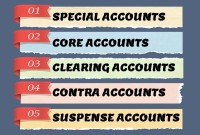- Home
- Business Processes
- Industry Knowledge
- Aerospace Industry
- Automotive Industry
- Banking Domain
- BFSI Industry
- Consumer/ FMCG Industry
- Chemicals Industry
- Engineering & Construction
- Energy Industry
- Education Domain
- Finance Domain
- Hospitality Domain
- Healthcare Industry
- Insurance Domain
- Retail Industry
- Travel and Tourism Domain
- Telecom Industry
- Leadership Skills
- eLearning
- Home
- Business Processes
- General Ledger (Record to Report)
- Prepayments and Prepaid Expenses
Prepayments and Prepaid Expenses
Prepayments are the payment of a bill, operating expense, or non-operating expense that settle an account before it becomes due. Learn the concept of prepaid expenses. Understand the accounting treatment for prepaid expenses. Understand the concept by looking at some practical examples and finally learn the adjusting entry for these expenses.
What are Prepaid Expenses?
Prepaid expenses, sometimes referred to as deferred expenses, are the amounts that have been paid in advance to a vendor or creditor for goods and services. These payments initially get recorded as assets but are expected to become expenses over time or through the normal operations of the business. Supplies, prepaid insurance, prepaid advertising, advance rental, advance tuition fee, and prepaid interest are some examples of prepaid expenses that may require adjustment at the end of an accounting period.
What is the accounting treatment for prepaid expenses?
Prepaid Expenses are the expenses that are paid before the time period in which the benefit will be consumed. The payment is a current asset on the balance sheet and this amount paid is then amortized, as the consumption or utilization happens by charging proportionate amounts to expense accounts. Because the advance payments are to obtain benefits for the organization over a period of time, the cost of these assets is charged against profits throughout the period, usually on a monthly basis. Prepaid expenses are treated as current assets because the company has paid for something and someone owes services or goods in exchange in the future.
Although the prepaid expenses are generally classified as Current Assets in the balance sheet, however, it’s an unusual classification as prepaid expenses will never, except in rare cases, be turned into cash in the practical world. Prepaid expenses are expenses that have been paid in advance and therefore won't have to be paid again, in a way they create cash by enabling the company to avoid paying out towards the expense for the benefit period.
What are some examples of Prepaid Expenses?
Every business buys insurance of various kinds to manage and mitigate risk and to buy insurance the organization needs to pay the premium to the insurance company, which is generally paid in advance, typically for a year at a time, and covers the organization for specified risks for the policy period. For some businesses, insurance can be a very costly item. The policy cover may extend many accounting periods and hence companies allocate the cost of that protection over the period of time that is being protected, based on the allocation per accounting period. Proper accounting treatment, matching, and accrual concepts demand that the premium benefits all 12 months and should therefore be charged to profits over the benefit period, not just the month in which you paid the premium.
So, if the company has defined its accounting period as a calendar month and the policy period is for 12 months, then the company will charge the insurance amount to expense over the 12 months that it protects, usually by simply charging 1/12 of the total to expense each month. The balance of the advance premium payment is considered prepaid and it rests in a prepaid expense account until it has been entirely written off to expense. Other examples of prepaid expenses might be property taxes, advance rentals, or advance income tax installments.
Adjusting Entry for Prepaid Expenses:
Prepaid expenses (or deferred expenses) are expenses paid in cash and recorded as assets prior to being used. The most common form of an adjusting entry for prepaid expenses would be to create a current asset at the time of payment for the expense and charge it to the expense account over the accounting periods for which the benefit will be in place. These types of adjusting entries are usually permanent.
In the case of prepaid expenses, there is a timing difference between the cash-flow and the actual charge to the expense spread over the period of coverage of the advance. In case these cash-flows are not matched to the accounting periods in which the expenses will actually happen, it will adversely affect the profits of the period in which the cash flow has been recorded. Therefore prepaid expenses are treated as assets to reflect the true state of affairs for the current accounting period.
Many business managers often overlook these timing differences because they think that the effects will equal and compensate each other over time. But such differences can be very significant in the short term and can impact the critical cash flow planning.
Prepayment accounting entries:
Given below is a set of accounting entries that generally take place in automated systems and ERPs:
Step 1: Raise a Prepayment Invoice
Debit: Prepaid Expense A/c
Credit: Liability A/c
(Example: Performa invoice of the total insurance period for the year has been received and the company has decided to purchase the policy)
Step 2: Prepayment is release to the vendor:
Debit: Liability A/c
Credit: Bank/cash A/c
(Example: The payment has been released to the vendor)
Step 3: When the Invoice is raised for Expense:
Debit: Expense Charge A/c
Credit: Prepaid Expense A/c
(Example: During the accounting period one, the charge for the expense is made and prepaid expense is reduced by the same amount)
Related Links
You May Also Like
-
Generally Accepted Accounting Principles define the accounting procedures, and understanding them is essential to producing accurate and meaningful records. In this article we emphasize on accounting principles and concepts so that the learner can understand the “why” of accounting which will help you gain an understanding of the full significance of accounting.
-
The purpose of the general ledger is to sort transaction information into meaningful categories and charts of accounts. The general ledger sorts information from the general journal and converts them into account balances and this process converts data into information, necessary to prepare financial statements. This article explains what a general ledger is and some of its major functionalities.
-
A joint venture (JV) is a business agreement in which the parties agree to develop, for a finite time, a new entity and new assets by contributing equity. They exercise control over the enterprise and consequently share revenues, expenses and assets. A joint venture takes place when two or more parties come together to take on one project.
-
There are five types of core accounts to capture any accounting transaction. Apart from these fundamental accounts, some other special-purpose accounts are used to ensure the integrity of financial transactions. Some examples of such accounts are clearing accounts, suspense accounts, contra accounts, and intercompany accounts. Understand the importance and usage of these accounts.
-
As the business grows, the company may want to transition to a branch structure as branches are allowed to conduct a much broader range of activity than representative offices. Branches can buy and sell goods, sign contracts, build things, render services, and generally everything that a regular business can do. A company expands its business by opening up its branch offices in various parts of the country as well as in other countries.
-
GL - Accrued / Unbilled Revenue
Accrued revenues (also called accrued assets) are revenues already earned but not yet paid by the customer or posted to the general ledger. Understand what we mean by the terms accrued revenue, accrued assets, and unbilled revenue. Explore the business conditions that require recognition of accrued revenue in the books of accounts and some industries where this practice is prevalent.
-
In every journal entry that is recorded, the debits and credits must be equal to ensure that the accounting equation is matched. In this article, we will focus on how to analyze and recorded transactional accounting information by applying the rule of credit and debit. We will also focus on some efficient methods of recording and analyzing transactions.
-
The sole trader organization (also called proprietorship) is the oldest form of organization and the most common form of organization for small businesses even today. In a proprietorship the enterprise is owned and controlled only by one person. This form is one of the most popular forms because of the advantages it offers. It is the simplest and easiest to form.
-
Funds contributed by owners in any business are different from all other types of funds. Equity is the residual value of the business enterprise that belongs to the owners or shareholders. The funds contributed by outsiders other than owners that are payable to them in the future. Liabilities are generally classified as Short Term (Current) and Long Term Liabilities. Current liabilities are debts payable within one year.
-
In this article we will help you understand the double-entry accounting system and state the accounting equation and define each element of the equation. Then we will describe and illustrate how business transactions can be recorded in terms of the resulting change in the elements of the accounting equation.
Explore Our Free Training Articles or
Sign Up to Start With Our eLearning Courses

About Us
Learning
© 2023 TechnoFunc, All Rights Reserved










